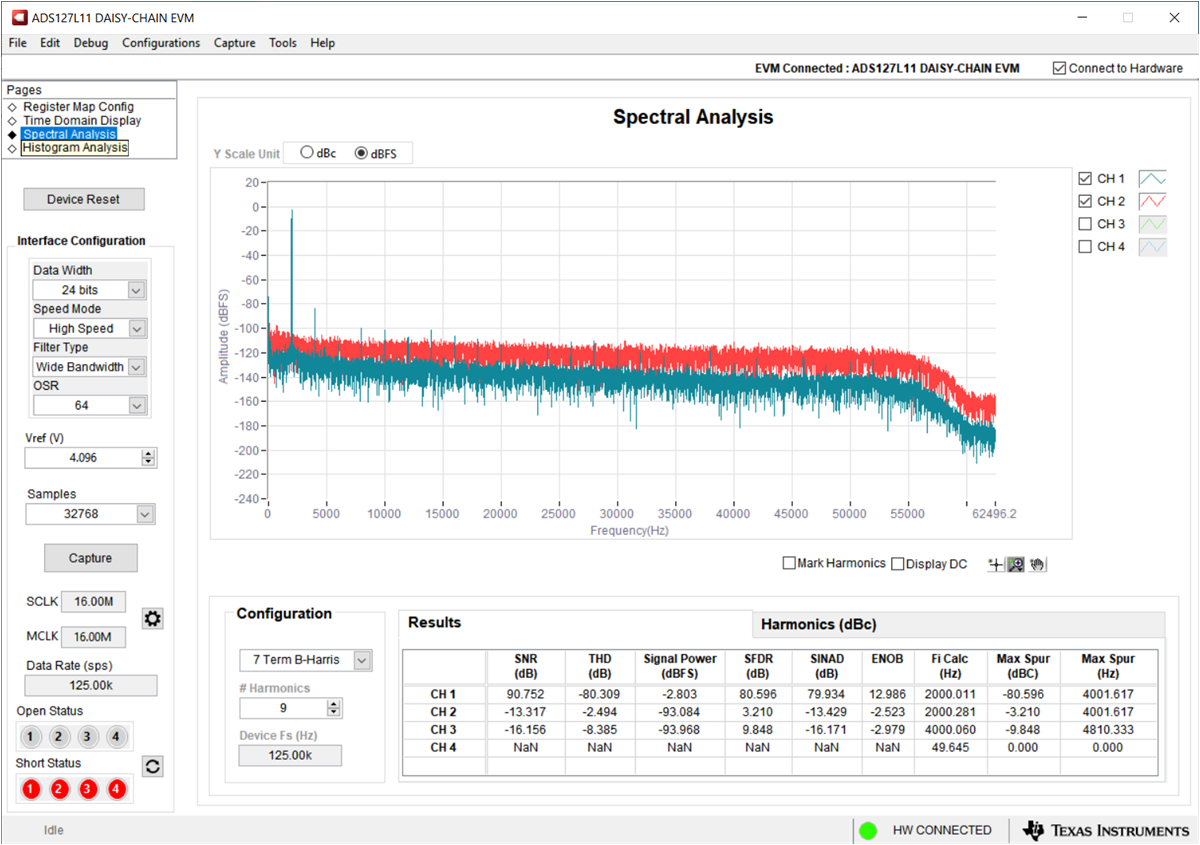TIDUF13 November 2022 ADS117L11 , ADS127L11
- Description
- Resources
- Features
- Applications
- 5
- 1System Description
- 2System Overview
- 3System Design Theory
- 4Hardware, Software, Testing, and Test Results
- 5Design and Documentation Support
- 6About the Author
4.4.3 Crosstalk
The 20-VPP, 2-kHz sinusoidal inputs applied to ch1 as in the input range test, ch2 signal power is compared to ch1 signal power. The 20 VPP, 2 kHz is not pure and includes multiple high harmonics.
 Figure 4-14 Frequency-Domain Plot of 20-VPP Input at Channel 1
Figure 4-14 Frequency-Domain Plot of 20-VPP Input at Channel 1The ch1 signal level is ch1 is –2.8 dB as expected for full-scale input. While ch2 and ch3 signal levels are at –93 dB. These results indicate a cross-talk level below –90 dB.